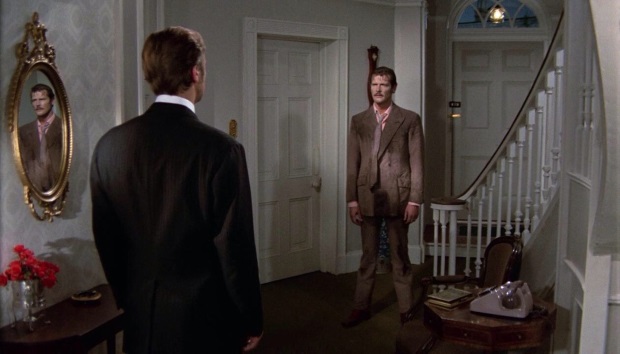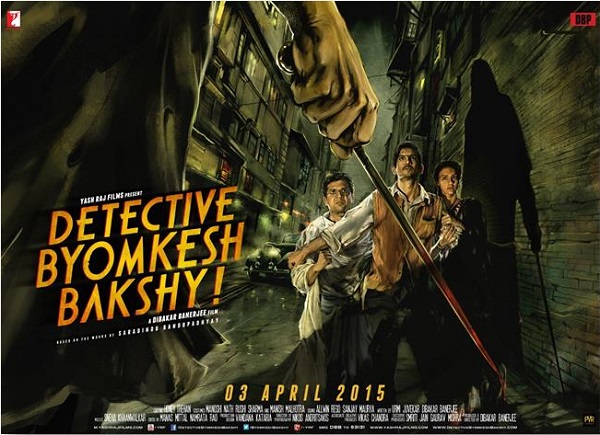The Man Who Haunted Himself
THE MAN WHO HAUNTED HIMSELF : MOVIE REVIEW
RATING : 4.5 STARS OUT OF 5 ( OUTSTANDING)
DIRECTOR : BASIL DEARDEN
SCREENPLAY : BASIL DEARDEN , MICHAEL RELPH, BRYAN FORBES
BASED ON : “ THE STRANGE CASE OF MR.PELHAM “ BY ANTHONY ARMSTRONG
CAST : ROGER MOORE, HILDEGARDE NEIL
ENGLISH, 1970
This under-recognized 1970 gem is a terrific lesson in how to concoct a riveting thriller and maintain the tempo all the way to a climax the intelligence of which matches the body. Writers, directors, producers and actors should examine it and take notes how to weave a mystery film and conclude it without insulting the audience.The film is truly haunted – it’s the story of a man who has to contend with a crafty duplicate stealing his life after a serious car accident ; director and co-writer Basil Dearden himself suffered a somewhat similar fate, just a year after the film, after ending up in a real-life road accident which took his life. Who knows – he might have emerged a much more evolved man than what he already was, in a subsequent life.
There are some critics who write reviews without seeing the film at all – I did something a little better. After catching a stellar print of this flick on Sky Movies Vintage TV channel in New Zealand, I decided to watch the whole film and then write about it – so good it was – though I’d missed the first 15 minutes.
Popular “James Bond” Roger Moore says this is his favourite film because he actually got to act in it. That is indubitably true – Moore might not get the Lifetime Achievement Award for Mind-Blowing Acting but he’s excellently competent here as a well-off businessman who’s caught in a maddening trick.
It’s fashionable London of the late 1960s and Harold Pelham (Moore) is comfortably poised to take full advantage of its luxuries and societal perches thanks to his cozy station. This suit-clad gentleman is the director of a company, and is married to a beautiful wife, with two little sons all inhabiting a gated mansion complete with a Middle-Eastern butler and tasteful Edwardian décor. Things however are not fully hunky dory – his business tactics are uninspired, and things are worse at home where he’s stopped making love to his wife, the anhedonia between them blooming like an English Rose.
The accident proves personally cataclysmic - he “dies” on the operation table but then eventually revives, and tries to get on with life as usual. So it seems, till he realizes with a cold chill about what’s going on - people tell him he was with them just moments before, even though he’s just entered the room ! He hears about radical overhauling proposals he’s supposedly secretly discussed with the company’s movers and shakers though he has had no such discussions with them. A young siren in her apartment is enraged when Harold not only does not remember their sexual adventure but also fails to show any familiarity with her. He eventually visits a psychiatrist and gets admitted to get to the bottom of this imbroglio, but who knows who’s cozying up to his wife at home at this time ?
Pic’s seductions are both narrative and aesthetic. The runtime is a crisp 95 minutes, and though there is enough psychological material here to chew through for an hour more of well-paced runtime in the hands of a good director, its compact length suits it just fine for the “Surely someone is playing a trick on him.. or wait, is there something eerie going on ? ” shtick. Moore’s character does a dandy job of looking flabbergasted and sweaty-faced, speeding from one puzzled juncture to another.
Not for nothing has the film been treated to a Blu-Ray transfer in the 21st century. Albert Witherick’s tasteful production design ensures frame after frame of elegant European décor be it house interiors or the posh clubs that Pelham works through. Pelham’s wood-paneled office with its maritime environs and suited men marks the intersection of the pic’s design and its inspiration in Hitchcock’s landmark 'Vertigo' ( 1960) which features a similar office where Scottie first learns of the “split personality” hook that vivisects his life. Tony Spratling’s cinematography is similarly studied in its classicism. There are splendid visual bonuses as in the scene where the psychiatrist takes Pelham on a perspective loop, and the camera looking up from the ground, circularly tracks the doctor who gently holds his patient’s swivel-chair and talks him through a merry-go-round.
Countless films like this one have fizzled away at the climax. Not Pelham who pummels his way to an ebullient and revelatory denouement. The surprise which is whispered towards the ending, is a bravura piece of imaginative psychological story-springing. It turns the whole film on its head, and though it is not that big a reveal, the more one probes into its provocative depths and do-or-die challenge, the more it refashions the picture. For a film which for the most part appears surfacial, the key question posed in the finale smashes open a whole philosophical world of the meaning of your personality, your legacy and how much one is willing to sacrifice for it.
UPN
UPNWORLD welcomes your comments.










0 COMMENTS
WRITE COMMENT